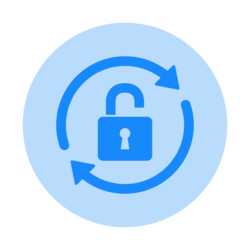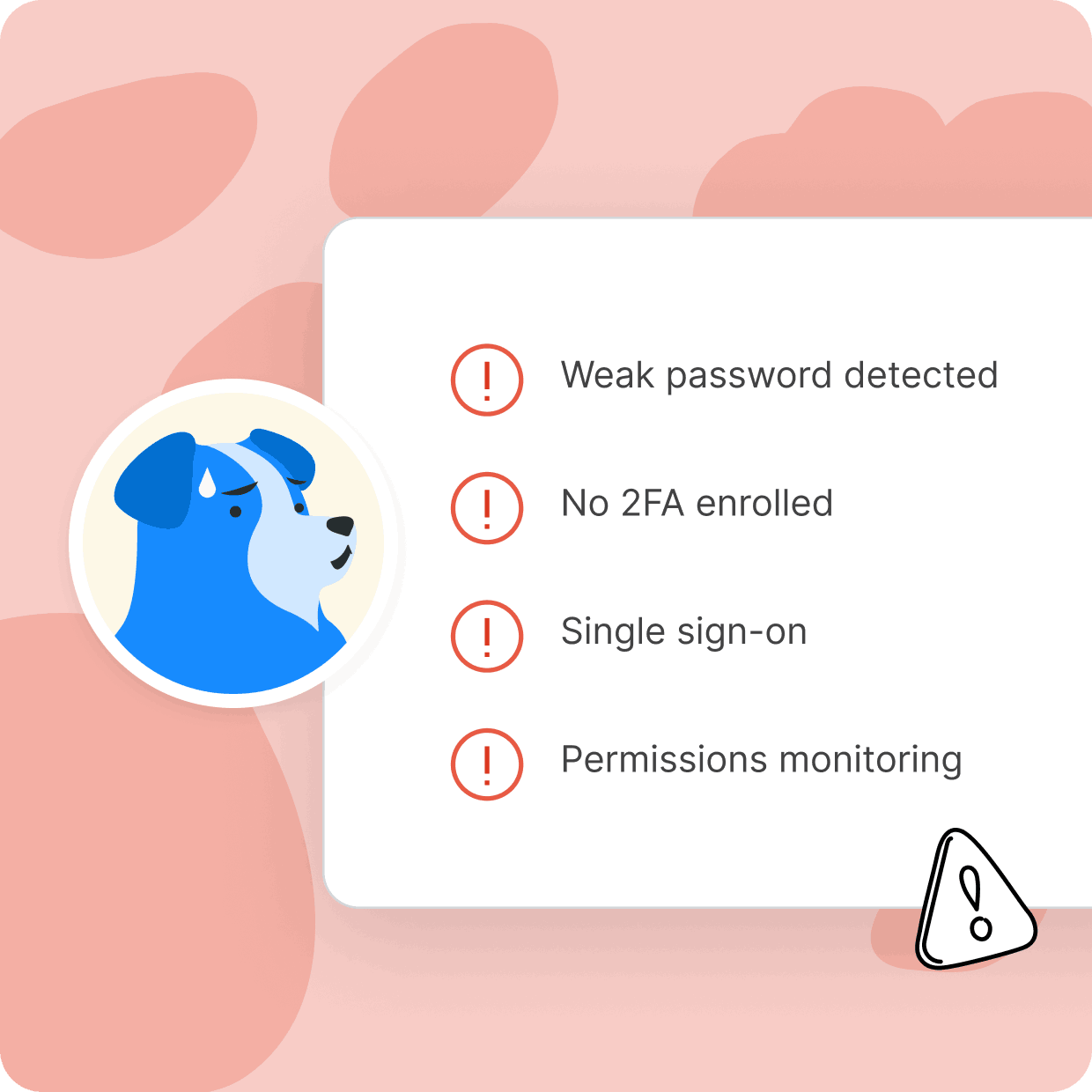Jack Henry is a leading technology company and payment processing service in the financial world. SCIM (System for Cross-domain Identity Management) stands out as a cutting-edge solution that empowers organizations to streamline user management, enhance authentication processes, and bolster data security, leading to improved operational efficiency and customer trust.
Regrettably, most business applications, including Jack Henry, are incompatible with the SCIM specification, which automates user onboarding and offboarding from applications. These "nonfederated" applications, in the cloud and on-premises, are a growing risk area for businesses.
The good news is that Cerby seamlessly integrates all your applications with your identity provider, regardless of whether they align with the SCIM specification.
In this informative guide, we'll delve into the specifics of Jack Henry software, explore its historical evolution, and illuminate its advantages.
Automate onboarding and offboarding to any app
With Cerby you can

Automate offboarding

Centralize management
Cerby provides a bridge between your identity provider and applications that don't support SCIM, giving you a centralized dashboard to manage offboarding across all applications, eliminating the need for manual processes and reducing the risk of errors.

Offboard with confidence
Offboard like a boss with Cerby
Automated provisioning for Jack Henry
Jack Henry provisioning and deprovisioning are essential components of the vendor integration program. These processes play a crucial role in managing user access to systems and applications, ensuring that individuals have the appropriate privileges and permissions to perform their job duties.
- Provisioning is the process of granting user access to resources.
- Deprovisioning is the process of revoking or disabling access when it is no longer required.
Having a robust provisioning and deprovisioning policy is of utmost importance for organizations. It helps maintain a secure and controlled environment, reducing the risk of unauthorized access and potential data breaches. By implementing a well-defined policy, companies can ensure that only authorized individuals have access to sensitive information, safeguarding their assets and maintaining compliance with regulatory requirements.
The process of setting up provisioning and deprovisioning involves several key steps. Firstly, organizations need to establish a comprehensive user access provisioning policy that defines the roles and responsibilities of various stakeholders involved in the process. This policy should outline the criteria for granting access, including the necessary approvals and documentation.
Once the policy is in place, the organization can proceed with user access management. This involves creating user accounts and assigning appropriate roles and permissions based on the individual's job requirements. Automated tools and identity management systems can streamline this process, enabling quick and accurate provisioning of user access.
Automatic suspension
To ensure efficient user deprovisioning, organizations should establish an automatic suspension process. When an employee leaves the company, or changes roles, their access to systems and applications should be automatically suspended or revoked. This helps prevent situations where former employees retain access to sensitive information, reducing the risk of insider threats and data breaches.
Reviews and audits
Regular reviews and audits are also crucial to the provisioning and deprovisioning process. Organizations should periodically assess user access privileges, reviewing whether they are still necessary and appropriate. This helps identify any potential vulnerabilities or access rights that may need to be modified or revoked.
Jack Henry provisioning and deprovisioning are vital components of an effective vendor integration program. Implementing a provisioning and deprovisioning policy helps organizations maintain a secure environment, mitigate risks, and adhere to regulatory requirements.
Jack Henry user access management
Jack Henry user access management plays a crucial role in ensuring privacy and security within the organization. Effective management of user access helps organizations:
- Safeguard sensitive data
- Prevent unauthorized access
- Minimize potential cybersecurity risks
Jack Henry offers many ways to improve user access management, such as with Jack Henry access credentials, Jack Henry MFA (Multi-Factor Authentication), Jack Henry OutLink, and Jack Henry Episys.
Permissions management
User access management involves controlling and monitoring the privileges and permissions granted to individuals within the organization. It ensures that only authorized personnel have access to critical systems, applications, and data. By implementing strong authentication mechanisms, such as Jack Henry MFA, organizations can add an extra layer of security to user login processes, reducing the risk of unauthorized access.
Privacy and security
The privacy and security aspects of user access management are paramount for cybersecurity and risk management. Unauthorized access to sensitive financial data can lead to significant financial losses, reputation damage, and legal implications. By enforcing access controls, organizations can minimize the risk of internal and external threats, ensuring that only authorized individuals can access and manipulate critical information.
Compliance
User access management also contributes to compliance with industry regulations and data protection laws. Organizations in the financial sector must adhere to stringent regulations, including the Gramm-Leach-Bliley Act (GLBA) and Payment Card Industry Data Security Standard (PCI DSS). Proper access controls and user management help organizations meet these requirements and maintain a secure environment.
Jack Henry user access management is helpful for ensuring security and regulatory compliance. By leveraging authentication mechanisms and implementing secure access solutions, organizations can effectively manage user access and protect their systems and data from potential threats.
Authentication and provisioning
Authentication and provisioning are critical components for businesses using Jack Henry software, such as Jack Henry Symitar and Jack Henry Xperience, as they help mitigate user access risks and ensure a secure and controlled environment. Understanding these concepts and implementing policies and automation around them is essential for businesses to protect their systems and data effectively.
Authentication
Authentication is the process of verifying the identity of users attempting to access a system or application. It establishes the user's credibility and ensures that only authorized individuals can gain access.
Businesses can create policies around authentication by defining the authentication methods and requirements. This may include using strong passwords, multi-factor authentication (MFA), or biometric authentication, depending on the level of security required. By implementing robust authentication measures, businesses can significantly reduce the risk of unauthorized access and potential data breaches.
Provisioning
Provisioning, on the other hand, refers to the process of granting or revoking user access to systems, applications, and data. It involves creating user accounts, assigning appropriate roles and permissions, and managing user privileges.
Creating policies and automation around provisioning is crucial for businesses to streamline this process and ensure that access is granted based on the principle of least privilege. A policy for user provisioning should outline the steps and approvals required to grant access, define the roles and responsibilities of various stakeholders involved, and establish guidelines for managing access privileges.
Automated authentication and provisioning
Automation plays a significant role in authentication and provisioning processes. By utilizing automated tools and identity management systems, businesses can streamline the onboarding and offboarding of users, reducing the likelihood of human errors and ensuring consistent application of access policies.
Automation can enable businesses to set up workflows that trigger provisioning and deprovisioning actions based on predefined criteria, such as employment status changes or role transitions. This helps ensure timely and accurate user access management while minimizing administrative burden.
Implementing policies and automation around authentication and provisioning is crucial for helping businesses to:
- Enhance security
- Streamline processes
- Mitigate risks
Automation enables organizations to enforce strong authentication measures, such as MFA, and establish standardized procedures for granting and revoking user access. By following a well-defined process and leveraging automation, businesses can efficiently manage user access and minimize the risk of unauthorized access or data breaches.
Authentication and provisioning are fundamental aspects of managing user access risks. By creating policies and automation around these processes, businesses can improve security and ensure appropriate access privileges. Robust authentication measures and automated provisioning workflows contribute to a secure and controlled environment, safeguarding systems and data from potential threats.
Automatic suspension and deprovisioning
Automatic suspension and deprovisioning are crucial aspects of user access management for businesses utilizing Jack Henry software. These processes help ensure that access privileges are promptly revoked when they are no longer needed, reducing the risk of unauthorized access and potential security breaches. Creating policies and automation around automatic suspension and deprovisioning is essential for businesses to maintain a secure and controlled environment.
What is automatic suspension?
Automatic suspension involves the automatic disabling or suspension of user access when specific triggers or conditions are met. This can occur when an employee leaves the company, changes roles, or violates security policies. By automating the suspension process, businesses can ensure that access privileges are immediately revoked, minimizing the risk of unauthorized access by former employees or individuals with changed responsibilities. Automatic suspension can be triggered through integration with HR systems or by defining specific criteria within the user access management system.
What is deprovisioning?
Deprovisioning is the process of permanently revoking user access and removing user accounts from systems, applications, and data repositories. Businesses should create policies around deprovisioning that outline the steps and responsibilities involved in the process. This include:
- Determining the appropriate timing for deprovisioning
- Establishing the necessary approvals and documentation
- Defining the data retention and archiving policies
By implementing a deprovisioning control policy, businesses can ensure that user access is removed promptly and completely when it is no longer necessary.
Automating suspension and deprovisioning
Automation plays a crucial role in automatic suspension and deprovisioning processes. By utilizing automated tools and identity management systems, businesses can streamline the deprovisioning workflow and ensure consistent application of access policies. Automation enables organizations to set up processes that automatically trigger deprovisioning actions based on predefined conditions, such as termination of employment or a role change. This helps eliminate manual errors and delays, ensuring that access is promptly revoked.
Creating policies and automation around automatic suspension and deprovisioning is essential for businesses to maintain a secure environment and mitigate user access risks. These processes help minimize the window of opportunity for unauthorized access and reduce the administrative burden associated with manual deprovisioning. By implementing automated workflows and integrating with HR systems or other data sources, businesses can ensure that access privileges are efficiently managed throughout the employee lifecycle.
Automatic suspension and deprovisioning are crucial for effective user access management. Automatic suspension ensures that access privileges are promptly revoked when specific triggers are met while deprovisioning control policies, and automation enable businesses to efficiently remove user access when it is no longer required. By leveraging automation, businesses can improve efficiency and compliance in the user access management process.


